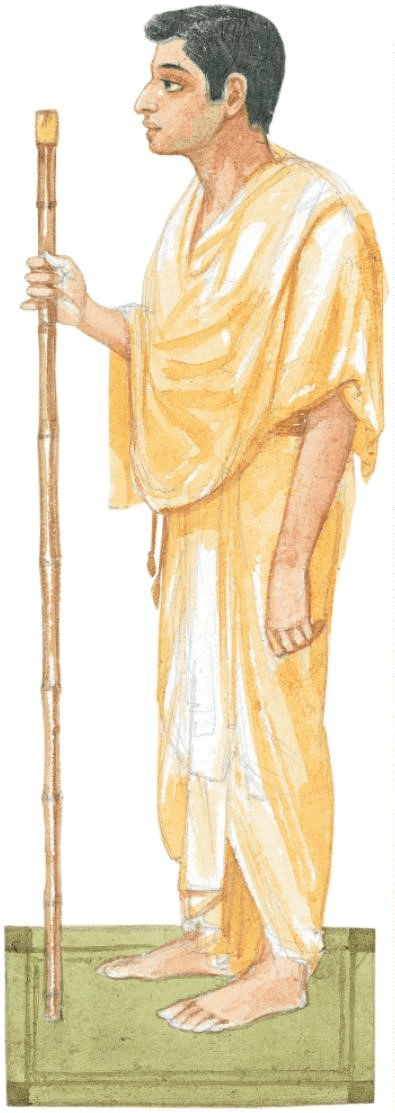Janeu and Upanayan Sanskar
Among the sixteen sanskaras, upanayana is one when a male child is given a janeu or thread to wear.

Upanayana is not a pre-marriage sanskara. This prepares the child to acquire education and spiritual learning. Therefore, it is usually during the completion of early childhood (five years or so) that the jane ritual is performed. This ritual initiates the child to become sanatak. Those who do not go through this ceremony at the appropriate age, are given the janeu before their marriage. Preferably two boys must go through the ceremony together. The ritual takes place ordinarily during the morning hours.
Preparations:
- 5 new clothes dyed in saffron colour (kurta, dhoti, ganji (vest) underwear and handkerchief). A sheet dyed in saffron colour, which is to be placed on the child's and upadhyayji's shoulders.
- 11/4 yard square khadi cloth should be kept ready for bhiksha bag.
- A munj rope (from coconut) to tie around the waist. A bamboo stick measuring the length from the nose of the child to the ground.
- Janeu thread.
- A kusha mat to sit on.
- Kharan (wooden slippers). In a thali dried fruits for bhiksha (almonds, raisins, Pishta, crystallised sugar) Mishri and dried dates. (cut into small pieces)
- New clothes for the upadhyay ji who conducts the ceremony.
- New clothes for Pandits who assist in conducting the havan ceremony.
- Book on sandhya written by Srimad Dayanand Saraswati.
Samagri for Havan
- Havan kund Panch patra
- Spoon for panchpatra
- Small plate (channi)
- Agar
- Bowl for ghee
- Lota (small metal pot) for water
- Spoon for havan
- Kalash and a cover on the top for keeping diya (small earthern lamp) Thali (tray) for aarti (Roli, rice, milk, moong, jaggery, water)
- Samidha
- Ghee
- Wood for havan
- Flowers
- Wicks for the diya (earthern lamp)
- Camphor
- Match sticks
- A cloth bag in which money for offerings and envelopes needed from time to time for some rituals are kept. These envelopes are for:
-Dakshina for panditji
-Aarti
- Chhaat
- Varapheri
-Panvlagni (touching feet)
-for Misrani
Parents and other family members sit with the male child. Upadhayaji conducts the janen thread ritual. After receiving the janeu, sister/bua does the aarti. Chaat is given to the nevgi (barber). The mother does varapheri. The mother escorts the son to touch the feet of elders present. The child goes to the members of the family asking for alms "Bhiksha Dehi'. The dried fruits from the thali are given by everyone as alms (bhiksha). Fried food such as puri are served (pakki rasoi). Chuta is taken out. (chuta: a plate with the various food items cooked is served and kept aside for the ancestors. It is later sent to a nearby temple or given to a brahmin). The panditji is served first, then the family members have their food.
Note: If the child has been initiated correctly in the janeu ceremony then he has to follow certain rules in daily activities.
share this page: